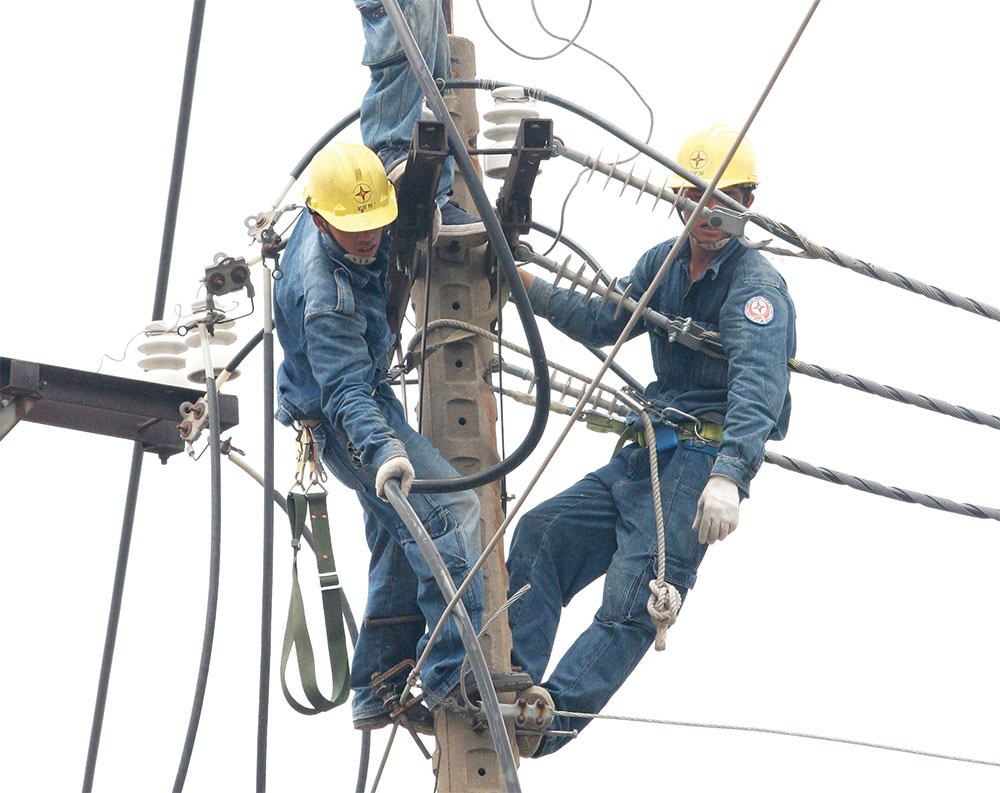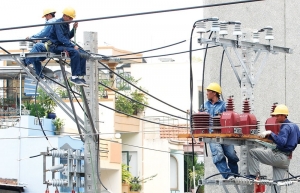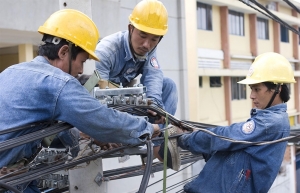North faces 4,900 MW shortfall in May and June
 |
According to a report by Electricity of Vietnam (EVN) to the Ministry of Industry and Trade (MoIT) on the 2023 electricity supply emergency, the North of Vietnam is at risk of lacking 1,600–4,900 MW during May and June, the hottest months of the year. This probability will increase if the capacity of wind farms is affected or if the water level in the region's hydroelectric reservoirs drops significantly.
EVN predicts that in the months of May, June, and July, the North will reach its hottest point, and the burden on the national power system will grow, with an expected 15 per cent rise compared to the same period last year.
The electricity provider stated that there were ways to offset this by supplementing power sources, reaching agreements on power purchasing, reducing electricity waste, or modifying capacity in extreme circumstances.
The National Load Dispatch Centre mobilised diesel units on April 17 in order to guarantee power supply, with April 21 seeing 2,498 MW mobilised.
However, EVN still requests that the MoIT evaluate and develop essential solutions to assist them in overcoming obstacles resulting from inadequate power sources. The hydroelectric, coal-fired, and gas-fired power sources all face challenges, whereas the procurement of electricity from China is minimal, reaching just 1.1 billion kWh, or 68 per cent of the plan.
As of 2022, unfavourable hydrological conditions have had an impact on hydroelectricity sources. The northern lakes continue to show a low water return, with water flowing at 70 to 90 per cent of the average capacity. The lakes' residual output is 4.5 billion kWh, which is 4.1 billion kWh less than the same period in 2022.
The fuel supply capacity of coal-fired power facilities is also constrained. The supply capacity of Vietnam National Coal and Mineral Industries Group and Dong Bac Corporation is 46 million metric tonnes (MT), which is lower than the 6 million MT approved, as coal imports remain challenging. EVN's power facilities specifically require 1.3 million MT of coal to operate.
Several fields are now officially in a period of decline, resulting in a reduction of gas supplies to gas-fired power plants compared to prior years. The anticipated gas output for 2023 is 5.6 billion cubic metres (cu.m), a decrease from 2022's 1.31 billion cu.m, while some fields continue to experience issues, making gas supply for electricity generation even more challenging.
The ability to produce gas this year is diminished compared to previous years due to the decline of critical fields, making it difficult to provide gas for electricity production. The anticipated supply in 2023 is 5.6 billion cu.m, approximately 1.3 billion cu.m fewer than in 2022.
Mobilisation from wind power is also constrained with the potential of an on-year decrease in power generation, particularly in the evenings, the prime time of day for electricity consumption.
 | Fresh approaches sought for electricity transmission The plan to raise transmission tariffs for energy indicates that Vietnam must take further steps to alleviate system stress and entice private sector investment in transmission. |
 | Electricity prices to be revised up following holiday The Ministry of Industry and Trade has allowed the Vietnam Electricity (EVN) to revise up electricity prices by a maximum of 3 per cent following the April 30 - May 1 holiday. |
 | Inflation threat with rising power costs Maintaining control over power prices exerts significant pressure on the electrical business, but rising electricity prices may expose the economy to the hazards of inflation. |
What the stars mean:
★ Poor ★ ★ Promising ★★★ Good ★★★★ Very good ★★★★★ Exceptional
Related Contents
Latest News
More News
- Heavy industries set for pilot greenhouse gas quotas (December 25, 2025 | 10:00)
- Swedfund invests in MSME growth and climate action in Vietnam (December 19, 2025 | 11:42)
- GreenYellow brings solar energy to light up remote schools in Tuyen Quang province (December 19, 2025 | 08:00)
- Charge+, Grab partner to develop EV charging network in Vietnam (December 18, 2025 | 17:11)
- Linking sci-tech and innovation to Vietnam’s net-zero future (December 18, 2025 | 14:31)
- Driving double-digit growth through green and circular transformation in Vietnam (December 17, 2025 | 09:00)
- Standard Chartered and ACCA deepen collaboration to develop Vietnam’s talent for a sustainable future (December 15, 2025 | 18:18)
- Schaeffler reports strong early output from Dong Nai solar project (December 12, 2025 | 15:16)
- Forestry conference highlights biodiversity and sustainability goals (December 09, 2025 | 13:35)
- Home Credit honoured among top 10 sustainable companies in trade and services (December 09, 2025 | 12:18)

 Tag:
Tag:





















 Mobile Version
Mobile Version